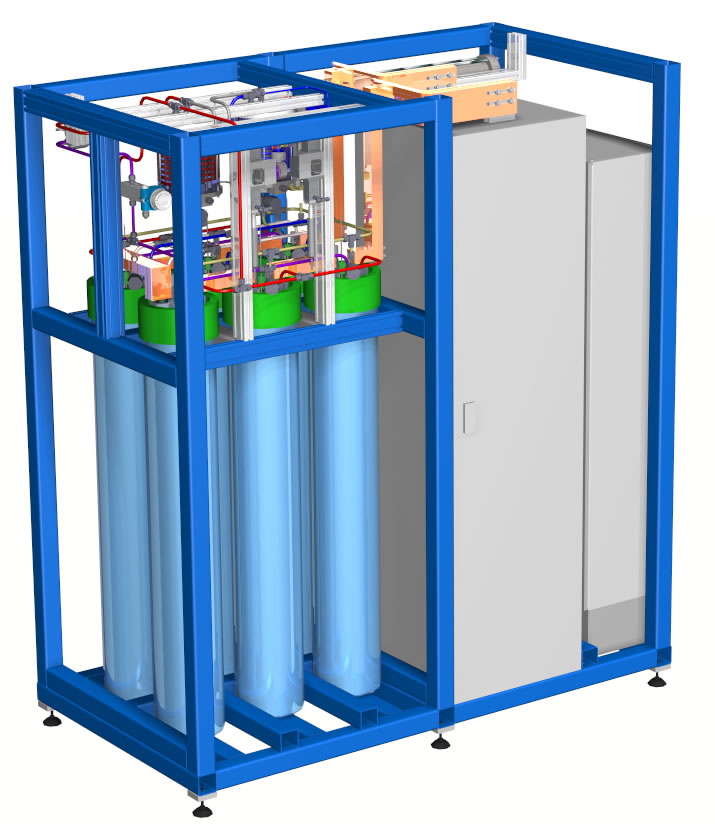Research project wants to make lower manufacturing costs possible
The topic of generating and saving hydrogen is playing a huge role in terms of the energy turnaround. A research project by the HYPOS-Initiative, the Research Centre Jülich, the Fraunhofer Institute for Microstructure of Materials and Systems IMWS and Kumatec GmbH has set itself the aim of reducing the manufacturing costs for electrodes and optimising the performance of electrolysis, to make hydrogen generation and storage more marketable.
Energy supply based on renewable energies is required to reduce CO2 emissions. Using electrolysis, electricity from such sources can be used to produce hydrogen, which can be saved, used as a material or used as a fuel. Two methods have been applied up until now: Alkaline electrolysis and PEM (Proton Exchange Membrane) electrolysis – there is a considerable need for the development for both technologies at the moment. A research project called »The development of performance-optimised and cost-effective electrode structures for alkaline electrolysis (ELKE)«, which is running until the year 2020 and is an initiative of HYPOS Hydrogen Power Storage & Solution East Germany, the Research Centre Jülich GmbH, Kumatec GmbH and the Fraunhofer Institute for Microstructure of Materials and Systems IMWS, has set itself the goal of optimising the production of electrodes for alkaline electrolysis and therefore making the production of »green« hydrogen based on regenerative sources more efficient.
In close cooperation with the group partners, a reduction of investment costs in alkaline electrolysis in the square metre scale of currently €1000/kW to €700/kW should be achieved in future by optimising the performance of electrodes as well as by a cost reduction in the manufacturing method. New material combinations and a modification of the electrode structure are the main focuses.
»The development of a continual coating method for the selected materials is necessary to reduce the costs. In collaboration with future users, we want to specifically develop improved electrodes for use in electrolyzers with large active surfaces«, says Dr. Nadine Menzel, Project Coordinator at Fraunhofer IMWS. A comparison with commercially available materials should indicate the potential of the new coating method with regard to processibility, functionality and cost reduction. With the help of new material combinations, the substance transport in the electrode should be adapted to the needs of a regeneratively supplied electricity network. The functionality of layers and their structural and effect relationships are precisely analysed and ultimately optimised using imaging methods such as matrix or transmission electron microscopy. An electro-chemical characterisation in the cell scale will also be carried out to obtain detailed results for the optimum coating. A further cost reduction can be achieved by a »scale-up« of the coating technique in a square metre scale. The participating system builders and stack manufacturers will then characterised the new electrode structures in real operation.
»At the end of the project, we should have new electrodes available so that the costs can be reduced for alkaline electrolyzers for the next generation by using less expensive materials and suitable coating methods. Nevertheless, we want to achieve a comparable performance characteristic and long-term stability. The produced electrodes should be integrated in the electrolysis systems of participating industry partners and tested in real operating under varying operating conditions«, says Dr. Nadine Menzel summing up the research project.

